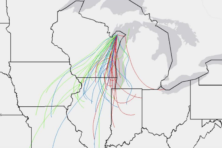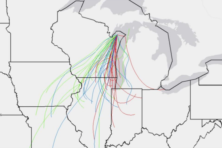Ground-Level Ozone Concentrations Show Modest Decreases
- Share
- Tweet
- Pin
- Share

The elevated ozone concentrations historically found in the air along Lake Michigan shoreline communities – including Door County – from more southerly power plants, industry and transportation, have decreased, but only modestly over the past couple of years, according to the recently released 2023 Air Quality Trends Report from the Wisconsin Department of Natural Resources (DNR).
The annual report includes state monitoring data through 2022 for air pollutants regulated under the federal Clean Air Act, including particle pollution, sulfur dioxide, nitrogen dioxide, carbon monoxide and ground-level ozone.
While concentrations of these pollutants have decreased over the last two decades, in recent years the report shows two of the most harmful pollutants – ozone and fine particulates – have decreased only modestly in recent years.
The 2023 report shows that since the early 2000s, statewide ozone concentrations have decreased 21%. With these reductions, the entire state is meeting the federal 2008 ozone standard. However, with only modest improvements, and even slight concentration increases along the Lake Michigan shoreline in recent years, the Milwaukee area and parts of Sheboygan and Kenosha counties are not meeting the more stringent 2015 ozone standard.
“Wisconsin has implemented many programs that have reduced emissions of ozone-causing pollutants from power plants, industry and transportation in the state,” said Gail Good, DNR air management program director, in a statement. “However, these emission reductions have not resulted in attainment because most sources of ozone-causing emissions are outside of the state’s control.”
While the numbers are headed in the right direction, the DNR acknowledges that there’s still work to do. As part of a massive air quality research campaign, the DNR partnered with the National Oceanic and Atmospheric Administration (NOAA), National Aeronautics and Space Administration (NASA), the Environmental Protection Agency (EPA) and several universities to better understand ozone formation chemistry and emission sources driving ozone formation.
To view a copy of the latest report and other historical reports, go to the DNR’s Air Quality webpage at dnr.wisconsin.gov/topic/AirQuality/Trends.html.


